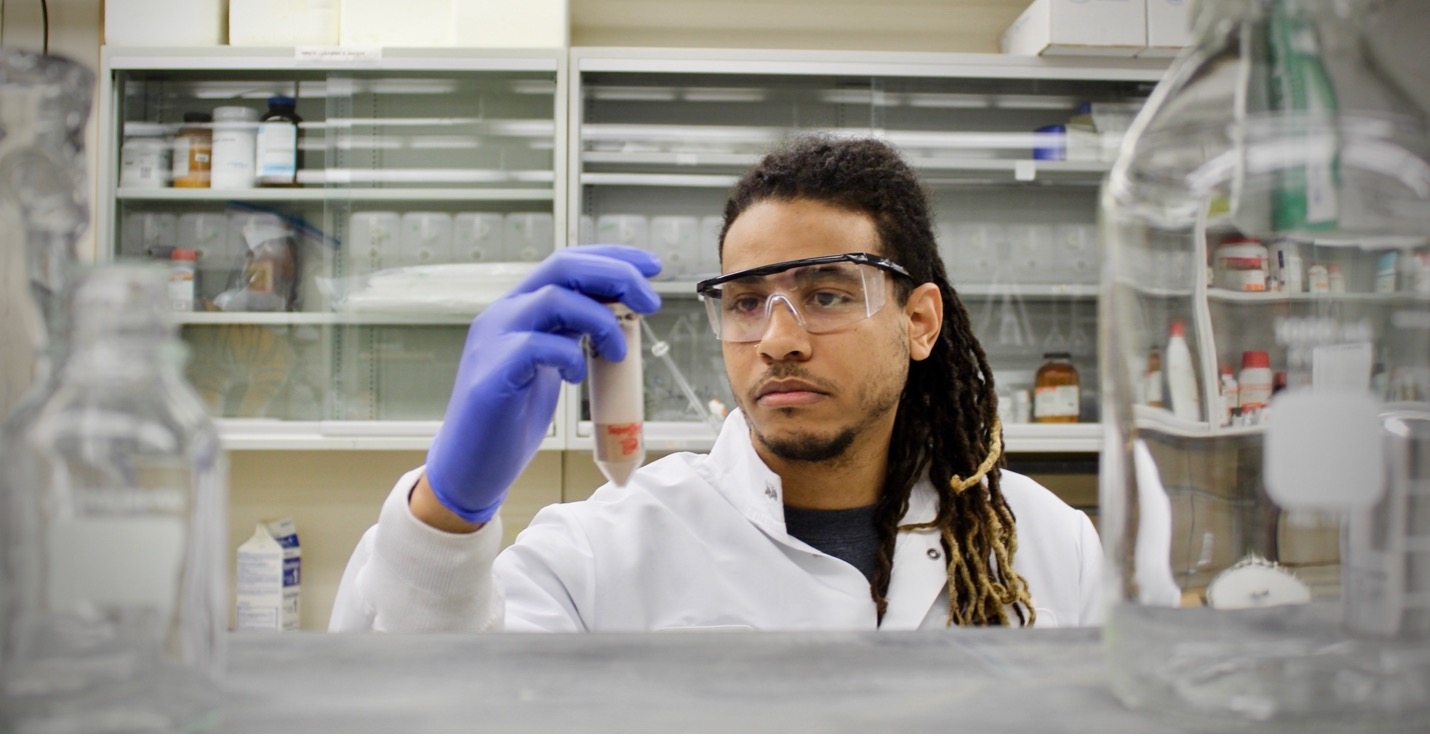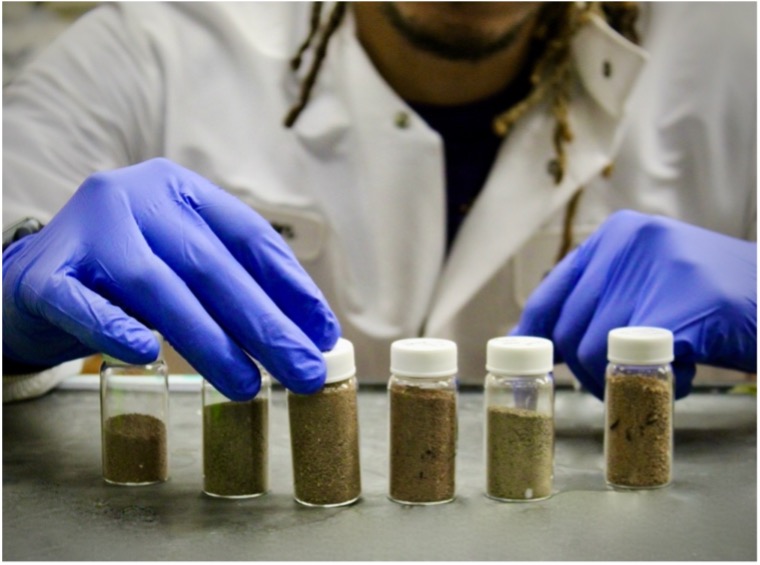Closing the door on open-burn waste treatment
May 11, 2023

LSU Chemistry graduate student Myron Lard preparing a soil sample taken from Colfax, Louisiana.
BATON ROUGE - Both inside and outside the lab, LSU Chemistry doctoral student Myron Lard is advocating for nurturing Louisiana nature. Originally from the Youngstown area in Ohio, Lard decided to enroll at LSU for the 2020 fall semester to break out of his comfort zone and travel across the country.
When he arrived at LSU, Lard was immediately drawn to the Cook research group for its extensive environmental chemistry work in coordination with the LSU Superfund Research Center. He is currently assisting Professor Robert Cook in studying the microstructural pathways of Environmentally Persistent Free Radical, or EPFR, formation and decay.
Teaming up with the research group of Associate Professor of the Practice Jennifer Richmond-Bryant of North Carolina State University, Lard is using techniques employed in the Cook lab to investigate the EPFRs found in samples taken from Colfax, Louisiana, home to the only commercially operating open-burn/open-detonation hazardous waste treatment facility in the entire country. While Richmond-Bryant has been focusing on the impacts of air pollutants, Lard has been focusing on toxins found in the soil.

Soil samples taken from Colfax, Louisiana, home to the only commercially operating open-burn/open-detonation hazardous waste treatment facility in the United States.
"We have been analyzing samples collected around the community to observe the presence of dangerous toxins potentially emitted from the facility’s practices.” Lard said. “We believe providing community members with information about their surroundings is extremely important considering the serious health impacts attributed to these toxins."
With a priority focus on environmental justice for the communities affected by these toxins, Lard and collaborators have helped exert enough pressure through their research to inspire change.
"Thanks, in part, to pressure from our LSU Superfund Research Center, the Louisiana Department of Environmental Quality (LDEQ) will stop the facility from open-burning within six months of the new permit's issue. The facility will also be required to construct a closed-burn facility with pollution controls for future waste disposal," said Lard.
Lard recently presented a research poster on the community-engaged study of toxic particulate matter near an open-burn waste thermal treatment facility at the Environmental Science and Design Research Institute's symposium in partnership with Kent State University and received an honorable mention.
As a result of his collaboration with Richmond-Bryant on the impacts of EPFR pollutants in Colfax, an opportunity made possible by his time as a member of the Cook group, Lard has been sparked with the desire to continue fighting for communities that may not have the means to fight for themselves.